Good Friends Building (1885-1960)
Introduction
Text-to-speech Audio
Images
Photo of Good Friends Building
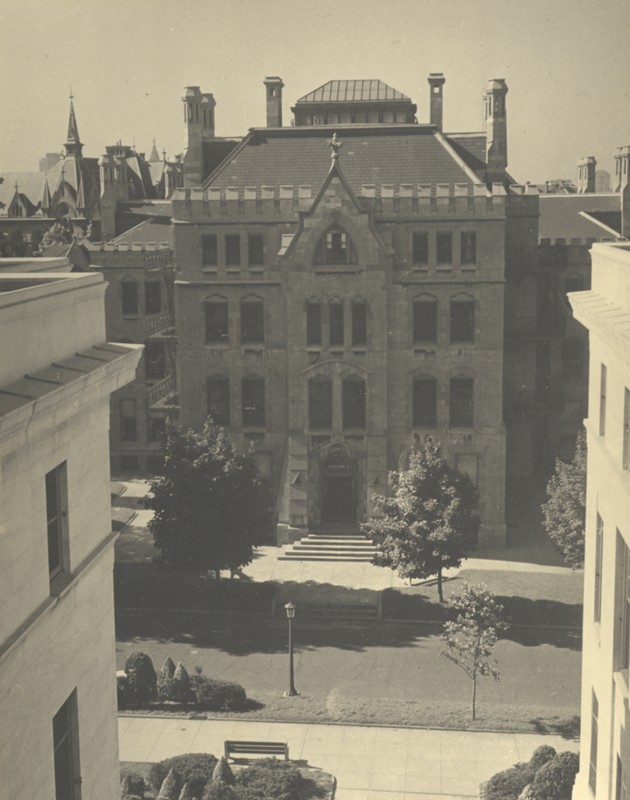
1888 illustration of Good Friends Building
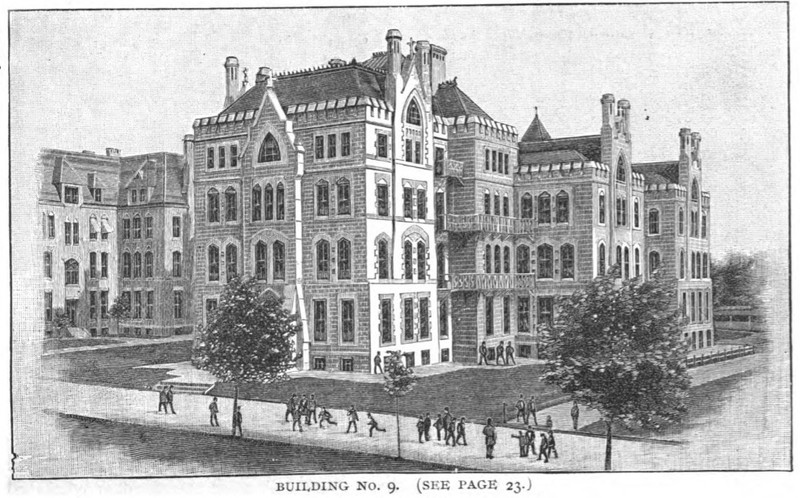
Photo of students in a living room of Good Friends Hall.
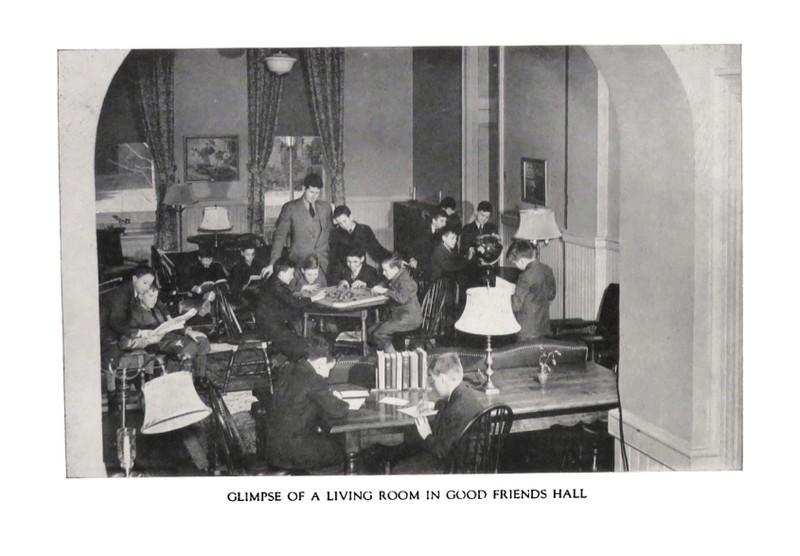
Good Friends Building and Lafayette Hall after a snowy day.
%20(2).jpg)
Rooftop view photo of Good Friends Building and Lafayette Hall in 1890.
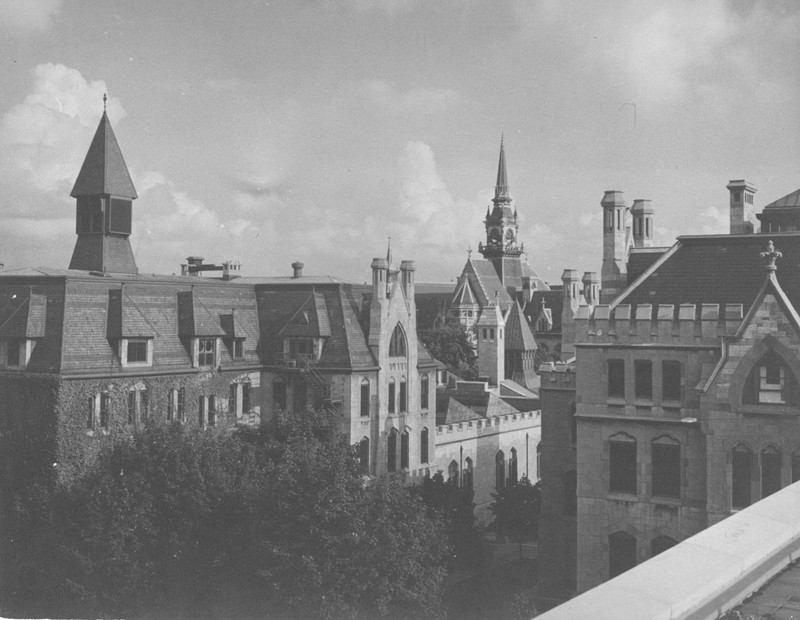
Color photo of Good Friends Building and back of Lafayette Hall before 1960 demolition.
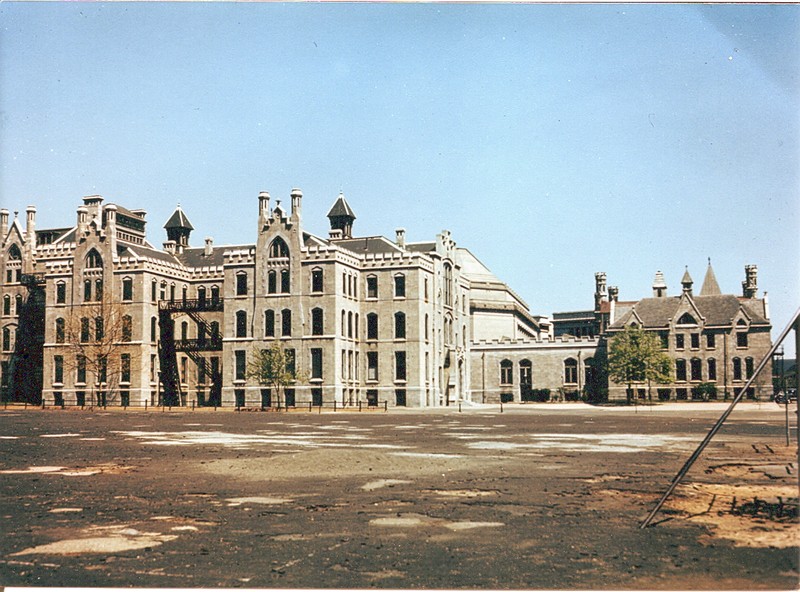
Backstory and Context
Text-to-speech Audio
In response to its growing student population in the late 19th century, Girard College made plans to erect a new dormitory building on campus for middle school students. The new Building #9 would be located south of the campus main road towards the west end of campus, on the grounds left of Building #8. James H. Windrim, a Girard College alumnus and the appointed architect for the Board of Directors of City Trusts, designed the building in the Gothic revival style he also used for Buildings #7, #8, and #10. Construction for Building #9 began in 1885 and it was completed and opened in 1886. When all of the numbered buildings on campus officially received names in 1927, Building #9 was renamed as the Good Friends Building after a ship owned by Stephen Girard, the school’s founder.
The exterior of the Good Friends Building was covered in white marble, with the exterior frame of the doors and windows lined in blue marble. The 3-story building contained dormitory section rooms, living rooms, student dorms, residential staff bedrooms, and domestic staff rooms in the attic. Toilets were located in a separate unit outside of the dormitory building. Having no dining or cooking facilities of their own, the residents of Good Friends used the grand dining hall of Building #8, which later became known as Lafayette Hall. They travelled through a corridor, which was built to connect both buildings, in order to eat their meals in the neighboring dormitory. Echoing a concern about fireproofing that dated back to Stephen Girard’s will, fire protection measures were planned into the infrastructure of Good Friends. The corridors and stairways were fireproof, exterior balconies and bridgeways were constructed for fire escape, and no furnaces or fireplaces were installed in the building.
Good Friends typically housed 10 and 11 year old students from the upper primary school or lower middle school grades. The building was intended to house 400 students, though it held up to 600 students during periods of expanding student population in the early 20th century. About 40 students were assigned to each dormitory section room. The children of Good Friends were supervised and cared for by female residential staff known as governesses. Students of the Good Friends Building were assigned to use the Good Friends playground for outdoor recreational activities. Beginning in the late 1930s, less overcrowding on their playground allowed for team sports and athletic competitions to be organized among Good Friends students. A Boy Scouts troop was also established for the students of both Good Friends and Lafayette, in which members were taken on hikes and walks in the park during the weekends. As a result of the domestic staff shortage that occurred during the Second World War, students were required to participate in the Student Work Program by fulfilling many of the domestic and cleaning duties for their own dormitory.
Like the adjacent Lafayette Hall, Good Friends required major renovations by the 1940s but its outdated layout was difficult to repurpose. In 1945, Girard College made plans to demolish both Lafayette and Good Friends in order to build a larger dormitory building, with small unit dorm rooms of 2-4 students, but declining postwar enrollment led the school to abandon this idea. The Good Friends Building was closed in 1947 and, along with Lafayette Hall, was demolished in 1960. A soccer field was built on top of the demolished site a year later. The soccer field, along with an encircling running track, continues to exist on these grounds today.
Sources
Chronology of GIRARD COLLEGE, 1832-2016. June 2016. Compiled by Gil Bunker, Thomas J. DiFilippo, Walter C. Gold, and Cheesman A. Herrick for the Founder's Hall collections in Girard College.
DiFilippo, Thomas J. Stephen Girard, The Man, His College and Estate. Edition 2nd. 1999. Accessed August 24 2020. http://www.girardweb.com/girard/contents.htm.
Girard College, Annual Reports of the Board of Directors of the Girard College of Orphans. Philadelphia, PA.
Girard College. President's Reports and Catalogue of Pupils - Girard College, The City of Philadelphia, Trustee. Philadelphia, PA.
Herrick, Cheesman A. History of Girard College. Philadelphia, PA. Girard College, 1927.
Girard College Historical Collections.
Scattergood, David. Hand Book of Girard College. Illustrated, Page 36. Philadelphia: D. Scattergood, 1888.
Girard College annual President's Report (?)
Girard College Historical Collections.
Girard College Historical Collections.
Girard College Historical Collections.
